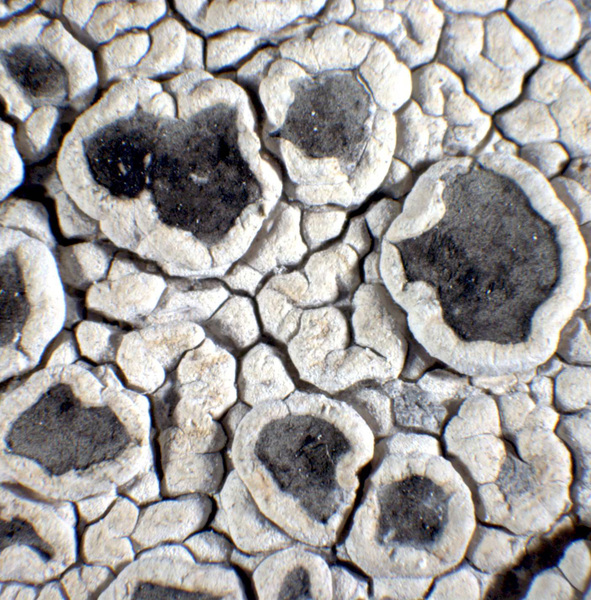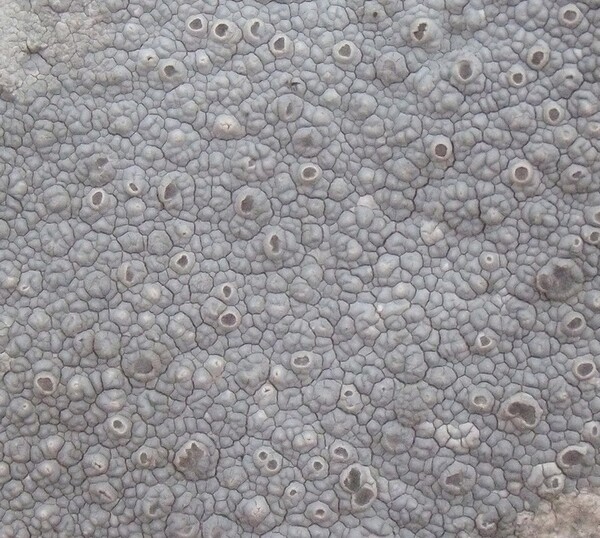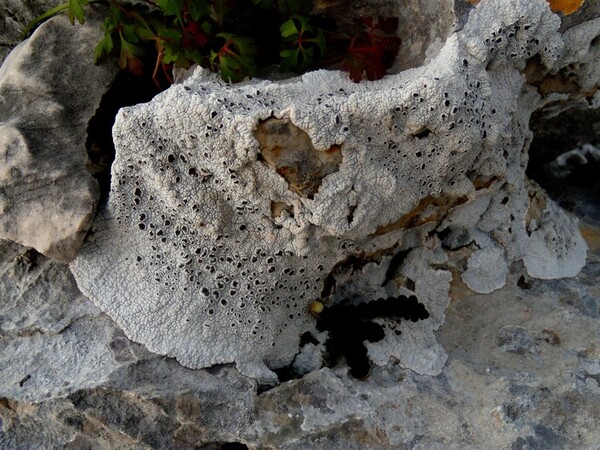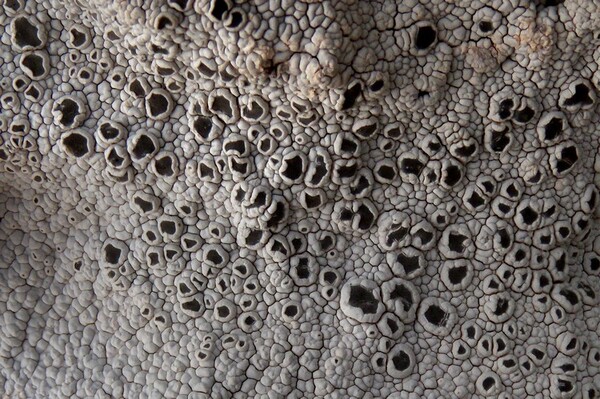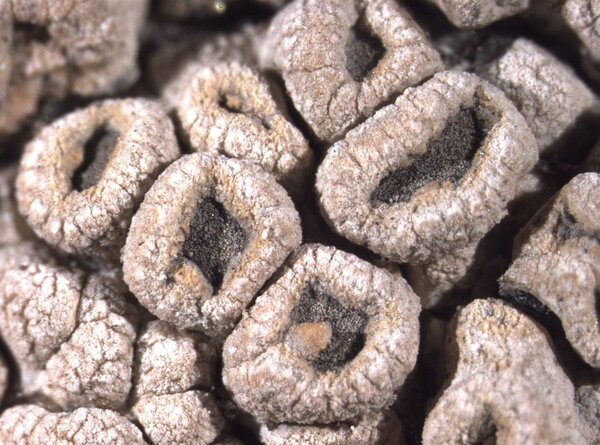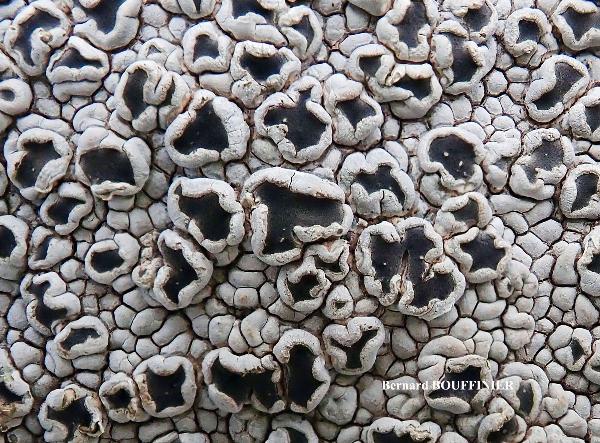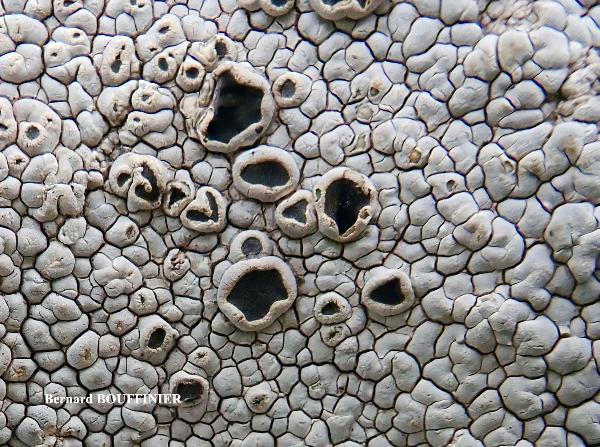Xalocoa ocellata (Fr.) Kraichak, Lücking & Lumbsch
in Kraichak & al., Austral. Syst. Bot., 26: 472, 2013. Basionym: Parmelia ocellata Fr. - Lich. Eur. Ref.: 190, 1831.
Synonyms: Diploschistes ocellatus (Fr.) Norman; Diploschistes ocellatus var. tuberculatus Werner; Lichen ocellatus Vill. nom. illegit.; Urceolaria ocellata (Fr.) DC.
Distribution: N - Ven, TAA, Lomb, Piem (Watson 2014, Lich. Ital. Exs. 13: Isocrono & al. 2018), Emil (Fariselli & al. 2020), Lig. C - Tosc (Benesperi 2000a), Marc, Umb (Ravera & al. 2006, Panfili 2007), Laz (Di Pietro & al. 2022), Abr (Nimis & Tretiach 1999), Mol (Nimis & Tretiach 1999, Ravera & Genovesi 2012, Genovesi & Ravera 2014), Sar. S - Camp (Garofalo & al. 1999, 2010, Ricciardi & al. 2000, Aprile & al. 2003, Nimis & Tretiach 2004, Catalano & al. 2016), Pugl (Nimis & Tretiach 1999, Gianfreda & Matino 2020), Bas (Nimis & Tretiach 1999), Cal (Puntillo 1996), Si (Nimis & al. 1996b).
Description: Thallus crustose, episubstratic, very thick, tightly attached when young, but older thalli often very loosely attached and tending to fall-off, verrucose-areolate, chalky white to pale grey, heavily pruinose. Areoles 0.4-3 mm wide and up to 4 mm thick, contiguous, usually irregularly convex to bullate. Cortex pseudoparenchymatous, covered by a distinct epinecral layer; medulla white, thick, I-. Apothecia lecanoroid, to 3.5 mm across, broadly attached, with a blackish, but often slightly grey-pruinose disc, and a thick, smooth, prominent, often sinuous thalline margin. Proper exciple thin, dark but not carbonized, , pseudoparenchymatous, without lateral paraphyses; epithecium poorly differentiated from the hymenium, colourless to dark grey; hymenium colourless, 100-150 µm high; paraphyses mostly simple, 1-1.5 mm thick, the apical cells not swollen; hypothecium colourless, 10-15 µm high. Asci 8-spored, cylindrical, the wall evenly thickened, lacking any apical apparatus, the contents K/I+ orange-red, the walls K/I-. Ascospores muriform with 3-6 transverse septa and 1-3 longitudinal septa, hyaline to finally brown, broadly ellipsoid, uniseriately arranged in the asci, (20-)24-27(-32) x (7-)10-12(-15) µm, non-amyloid. Pycnidia immersed, cerebriform. Conidia bacilliform, 4-7 x 1.1.5 µm. Photobiont chlorococcoid. Spot tests: thallus K+ yellow rapidly turning blood-red, C-, KC-, P+ orange, UV-. Chemistry: norstictic acid (major), connorstictic cryptostictic and stictic acids (minor).Note: a mild-temperate to Mediterranean lichen found on limestone, dolomite and calciferous sandstone, more rarely on soil; more frequent in the southwestern part of the Peninsula.
Growth form: Crustose
Substrata: rocks
Photobiont: green algae other than Trentepohlia
Reproductive strategy: mainly sexual
Commonnes-rarity: (info)
Alpine belt: absent
Subalpine belt: absent
Oromediterranean belt: absent
Montane belt: rare
Submediterranean belt: extremely rare
Padanian area: absent
Humid submediterranean belt: rather rare
Humid mediterranean belt: rather rare
Dry mediterranean belt: rare

Predictive model
Herbarium samples
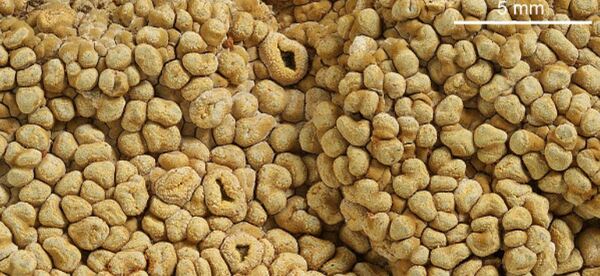

Felix Schumm – CC BY-SA 4.0
[19015], Australia, South Australia, Eyre Peninsula, 19 km west of Iron Knob, 32°50' S, 137°01' E, 250 m, on soil in savannah with Casuarina, with an understorey of Chenopodium and Maireana. Leg. H.T. Lumbsch (10734c) & J. Curnow, 05.09.1994, det. H.T. Lumbsch. LICH. AUSTRALASICI EXS. 279
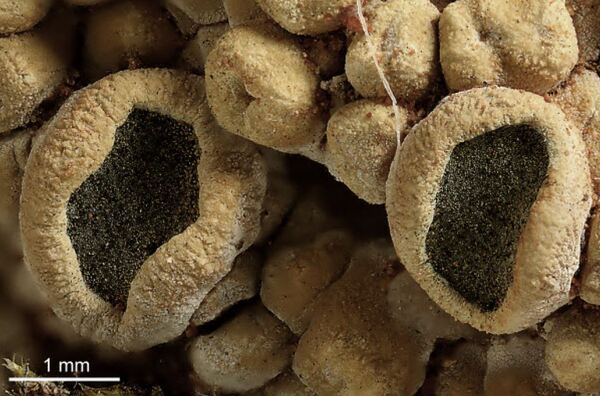

Felix Schumm – CC BY-SA 4.0
[19015], Australia, South Australia, Eyre Peninsula, 19 km west of Iron Knob, 32°50' S, 137°01' E, 250 m, on soil in savannah with Casuarina, with an understorey of Chenopodium and Maireana. Leg. H.T. Lumbsch (10734c) & J. Curnow, 05.09.1994, det. H.T. Lumbsch. LICH. AUSTRALASICI EXS. 279
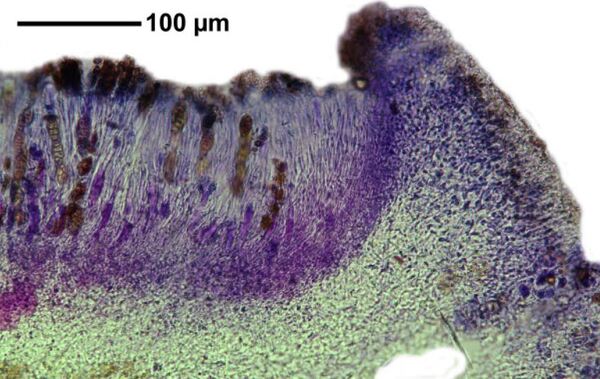

Felix Schumm – CC BY-SA 4.0
[19015], Australia, South Australia, Eyre Peninsula, 19 km west of Iron Knob, 32°50' S, 137°01' E, 250 m, on soil in savannah with Casuarina, with an understorey of Chenopodium and Maireana. Leg. H.T. Lumbsch (10734c) & J. Curnow, 05.09.1994, det. H.T. Lumbsch. LICH. AUSTRALASICI EXS. 279
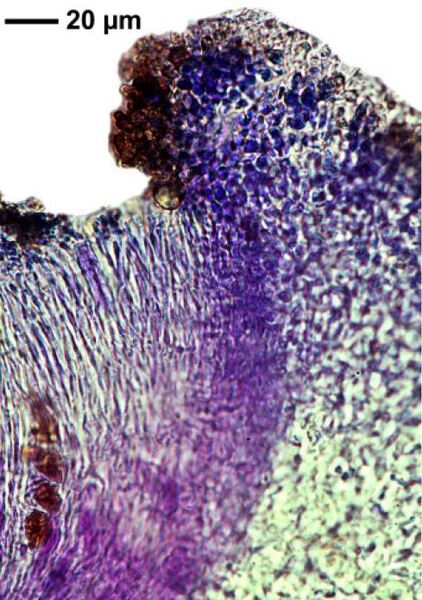

Felix Schumm – CC BY-SA 4.0
[19015], Australia, South Australia, Eyre Peninsula, 19 km west of Iron Knob, 32°50' S, 137°01' E, 250 m, on soil in savannah with Casuarina, with an understorey of Chenopodium and Maireana. Leg. H.T. Lumbsch (10734c) & J. Curnow, 05.09.1994, det. H.T. Lumbsch. LICH. AUSTRALASICI EXS. 279
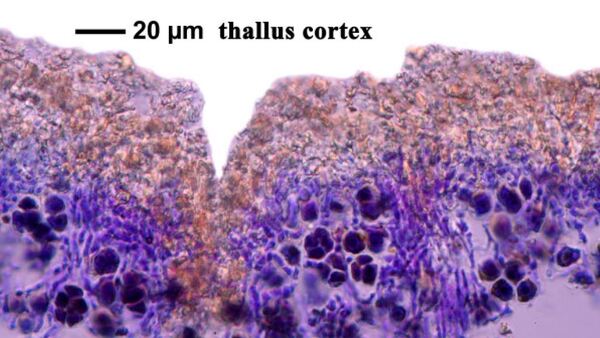

Felix Schumm – CC BY-SA 4.0
[19015], Australia, South Australia, Eyre Peninsula, 19 km west of Iron Knob, 32°50' S, 137°01' E, 250 m, on soil in savannah with Casuarina, with an understorey of Chenopodium and Maireana. Leg. H.T. Lumbsch (10734c) & J. Curnow, 05.09.1994, det. H.T. Lumbsch. LICH. AUSTRALASICI EXS. 279
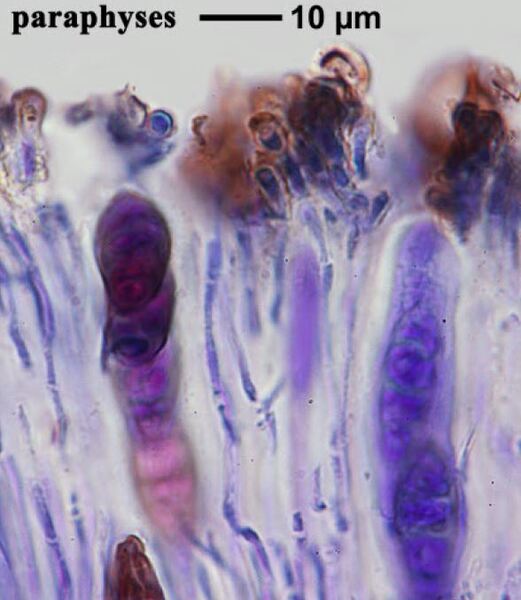

Felix Schumm – CC BY-SA 4.0
[19015], Australia, South Australia, Eyre Peninsula, 19 km west of Iron Knob, 32°50' S, 137°01' E, 250 m, on soil in savannah with Casuarina, with an understorey of Chenopodium and Maireana. Leg. H.T. Lumbsch (10734c) & J. Curnow, 05.09.1994, det. H.T. Lumbsch. LICH. AUSTRALASICI EXS. 279
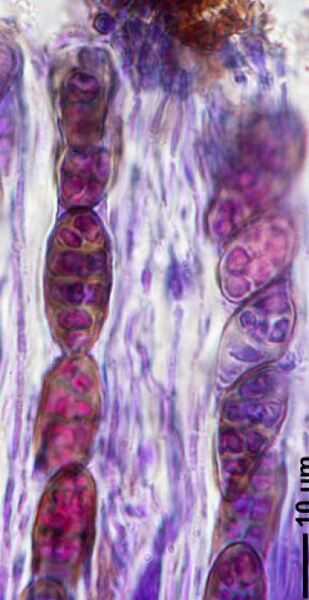

Felix Schumm – CC BY-SA 4.0
[19015], Australia, South Australia, Eyre Peninsula, 19 km west of Iron Knob, 32°50' S, 137°01' E, 250 m, on soil in savannah with Casuarina, with an understorey of Chenopodium and Maireana. Leg. H.T. Lumbsch (10734c) & J. Curnow, 05.09.1994, det. H.T. Lumbsch. LICH. AUSTRALASICI EXS. 279
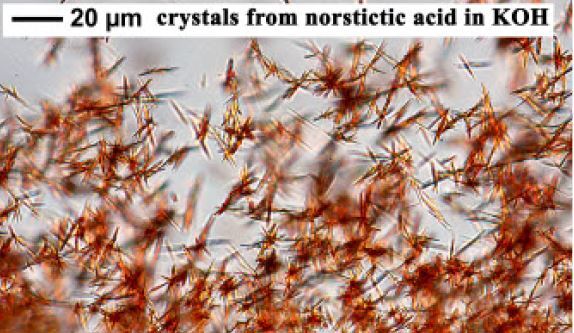

Felix Schumm – CC BY-SA 4.0
[19015], Australia, South Australia, Eyre Peninsula, 19 km west of Iron Knob, 32°50' S, 137°01' E, 250 m, on soil in savannah with Casuarina, with an understorey of Chenopodium and Maireana. Leg. H.T. Lumbsch (10734c) & J. Curnow, 05.09.1994, det. H.T. Lumbsch. LICH. AUSTRALASICI EXS. 279


Felix Schumm – CC BY-SA 4.0
[19015], Australia, South Australia, Eyre Peninsula, 19 km west of Iron Knob, 32°50' S, 137°01' E, 250 m, on soil in savannah with Casuarina, with an understorey of Chenopodium and Maireana. Leg. H.T. Lumbsch (10734c) & J. Curnow, 05.09.1994, det. H.T. Lumbsch. LICH. AUSTRALASICI EXS. 279
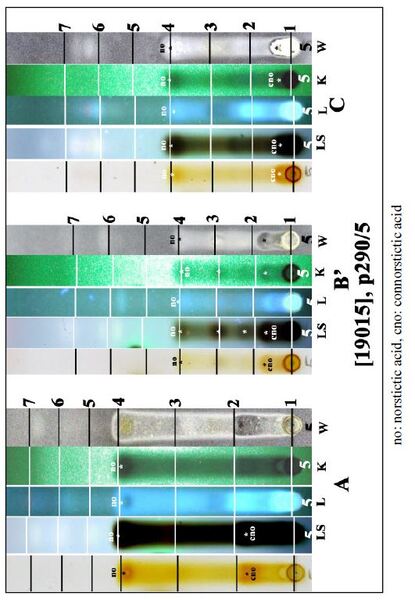

Felix Schumm – CC BY-SA 4.0
[19015], Australia, South Australia, Eyre Peninsula, 19 km west of Iron Knob, 32°50' S, 137°01' E, 250 m, on soil in savannah with Casuarina, with an understorey of Chenopodium and Maireana. Leg. H.T. Lumbsch (10734c) & J. Curnow, 05.09.1994, det. H.T. Lumbsch. LICH. AUSTRALASICI EXS. 279
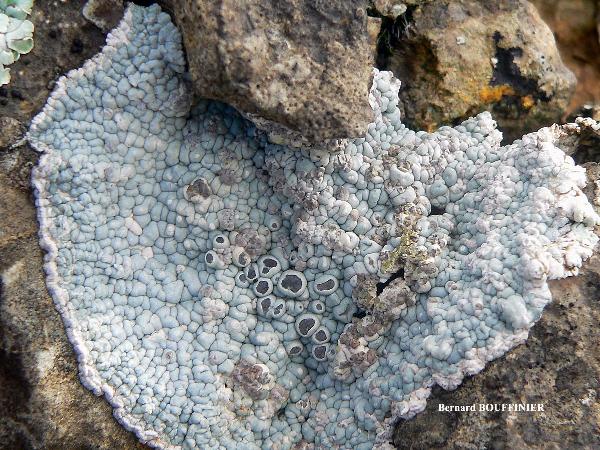
Bernard Bouffinier - Source: http://www.lichensmaritimes.org/index.php?task=fiche&lichen=1117&lang=en
France, Provence, Manosque
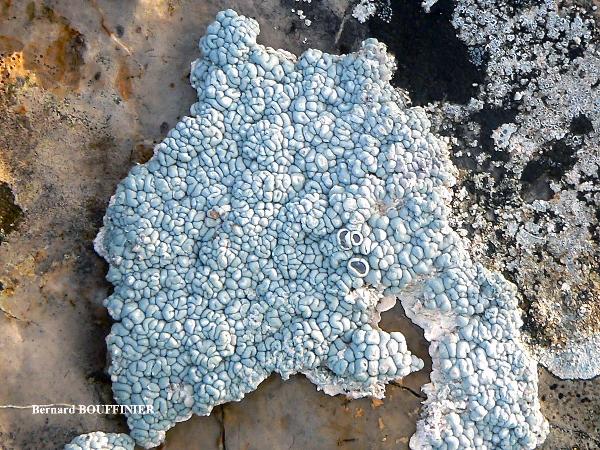
Bernard Bouffinier - Source: http://www.lichensmaritimes.org/index.php?task=fiche&lichen=1117&lang=en
France, Provence, Manosque
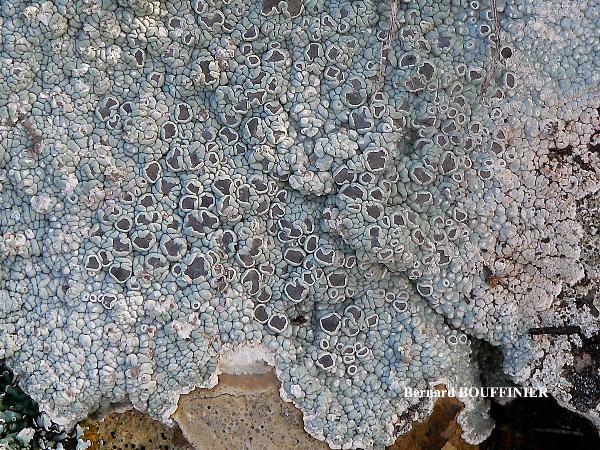
Bernard Bouffinier - Source: http://www.lichensmaritimes.org/index.php?task=fiche&lichen=1117&lang=en
France, Provence, Manosque
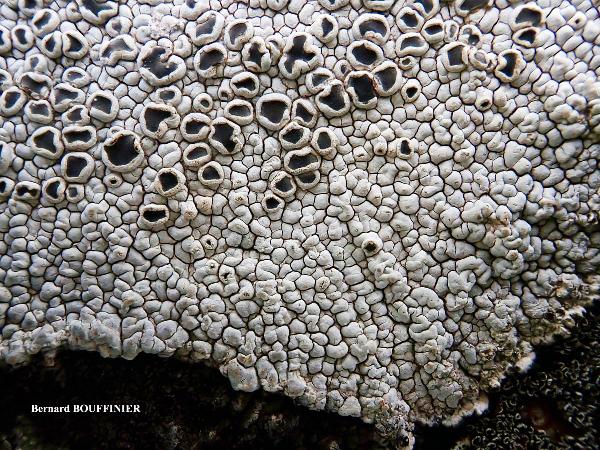
Bernard Bouffinier - Source: http://www.lichensmaritimes.org/index.php?task=fiche&lichen=1117&lang=en
Spain, Esparron
Growth form: Crustose
Substrata: rocks
Photobiont: green algae other than Trentepohlia
Reproductive strategy: mainly sexual
Commonnes-rarity: (info)
Alpine belt: absent
Subalpine belt: absent
Oromediterranean belt: absent
Montane belt: rare
Submediterranean belt: extremely rare
Padanian area: absent
Humid submediterranean belt: rather rare
Humid mediterranean belt: rather rare
Dry mediterranean belt: rare

Predictive model
| Herbarium samples |


Felix Schumm – CC BY-SA 4.0
[19015], Australia, South Australia, Eyre Peninsula, 19 km west of Iron Knob, 32°50' S, 137°01' E, 250 m, on soil in savannah with Casuarina, with an understorey of Chenopodium and Maireana. Leg. H.T. Lumbsch (10734c) & J. Curnow, 05.09.1994, det. H.T. Lumbsch. LICH. AUSTRALASICI EXS. 279


Felix Schumm – CC BY-SA 4.0
[19015], Australia, South Australia, Eyre Peninsula, 19 km west of Iron Knob, 32°50' S, 137°01' E, 250 m, on soil in savannah with Casuarina, with an understorey of Chenopodium and Maireana. Leg. H.T. Lumbsch (10734c) & J. Curnow, 05.09.1994, det. H.T. Lumbsch. LICH. AUSTRALASICI EXS. 279


Felix Schumm – CC BY-SA 4.0
[19015], Australia, South Australia, Eyre Peninsula, 19 km west of Iron Knob, 32°50' S, 137°01' E, 250 m, on soil in savannah with Casuarina, with an understorey of Chenopodium and Maireana. Leg. H.T. Lumbsch (10734c) & J. Curnow, 05.09.1994, det. H.T. Lumbsch. LICH. AUSTRALASICI EXS. 279


Felix Schumm – CC BY-SA 4.0
[19015], Australia, South Australia, Eyre Peninsula, 19 km west of Iron Knob, 32°50' S, 137°01' E, 250 m, on soil in savannah with Casuarina, with an understorey of Chenopodium and Maireana. Leg. H.T. Lumbsch (10734c) & J. Curnow, 05.09.1994, det. H.T. Lumbsch. LICH. AUSTRALASICI EXS. 279


Felix Schumm – CC BY-SA 4.0
[19015], Australia, South Australia, Eyre Peninsula, 19 km west of Iron Knob, 32°50' S, 137°01' E, 250 m, on soil in savannah with Casuarina, with an understorey of Chenopodium and Maireana. Leg. H.T. Lumbsch (10734c) & J. Curnow, 05.09.1994, det. H.T. Lumbsch. LICH. AUSTRALASICI EXS. 279


Felix Schumm – CC BY-SA 4.0
[19015], Australia, South Australia, Eyre Peninsula, 19 km west of Iron Knob, 32°50' S, 137°01' E, 250 m, on soil in savannah with Casuarina, with an understorey of Chenopodium and Maireana. Leg. H.T. Lumbsch (10734c) & J. Curnow, 05.09.1994, det. H.T. Lumbsch. LICH. AUSTRALASICI EXS. 279


Felix Schumm – CC BY-SA 4.0
[19015], Australia, South Australia, Eyre Peninsula, 19 km west of Iron Knob, 32°50' S, 137°01' E, 250 m, on soil in savannah with Casuarina, with an understorey of Chenopodium and Maireana. Leg. H.T. Lumbsch (10734c) & J. Curnow, 05.09.1994, det. H.T. Lumbsch. LICH. AUSTRALASICI EXS. 279


Felix Schumm – CC BY-SA 4.0
[19015], Australia, South Australia, Eyre Peninsula, 19 km west of Iron Knob, 32°50' S, 137°01' E, 250 m, on soil in savannah with Casuarina, with an understorey of Chenopodium and Maireana. Leg. H.T. Lumbsch (10734c) & J. Curnow, 05.09.1994, det. H.T. Lumbsch. LICH. AUSTRALASICI EXS. 279


Felix Schumm – CC BY-SA 4.0
[19015], Australia, South Australia, Eyre Peninsula, 19 km west of Iron Knob, 32°50' S, 137°01' E, 250 m, on soil in savannah with Casuarina, with an understorey of Chenopodium and Maireana. Leg. H.T. Lumbsch (10734c) & J. Curnow, 05.09.1994, det. H.T. Lumbsch. LICH. AUSTRALASICI EXS. 279


Felix Schumm – CC BY-SA 4.0
[19015], Australia, South Australia, Eyre Peninsula, 19 km west of Iron Knob, 32°50' S, 137°01' E, 250 m, on soil in savannah with Casuarina, with an understorey of Chenopodium and Maireana. Leg. H.T. Lumbsch (10734c) & J. Curnow, 05.09.1994, det. H.T. Lumbsch. LICH. AUSTRALASICI EXS. 279

Bernard Bouffinier - Source: http://www.lichensmaritimes.org/index.php?task=fiche&lichen=1117&lang=en
France, Provence, Manosque

Bernard Bouffinier - Source: http://www.lichensmaritimes.org/index.php?task=fiche&lichen=1117&lang=en
France, Provence, Manosque

Bernard Bouffinier - Source: http://www.lichensmaritimes.org/index.php?task=fiche&lichen=1117&lang=en
France, Provence, Manosque

 Index Fungorum
Index Fungorum
 GBIF
GBIF
